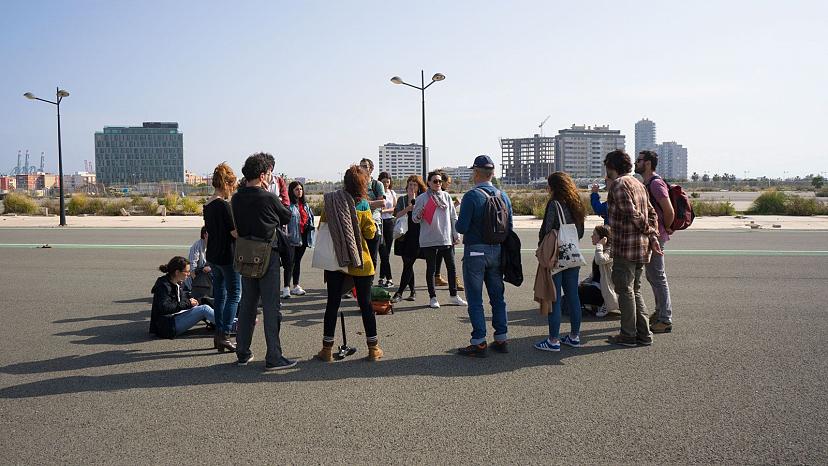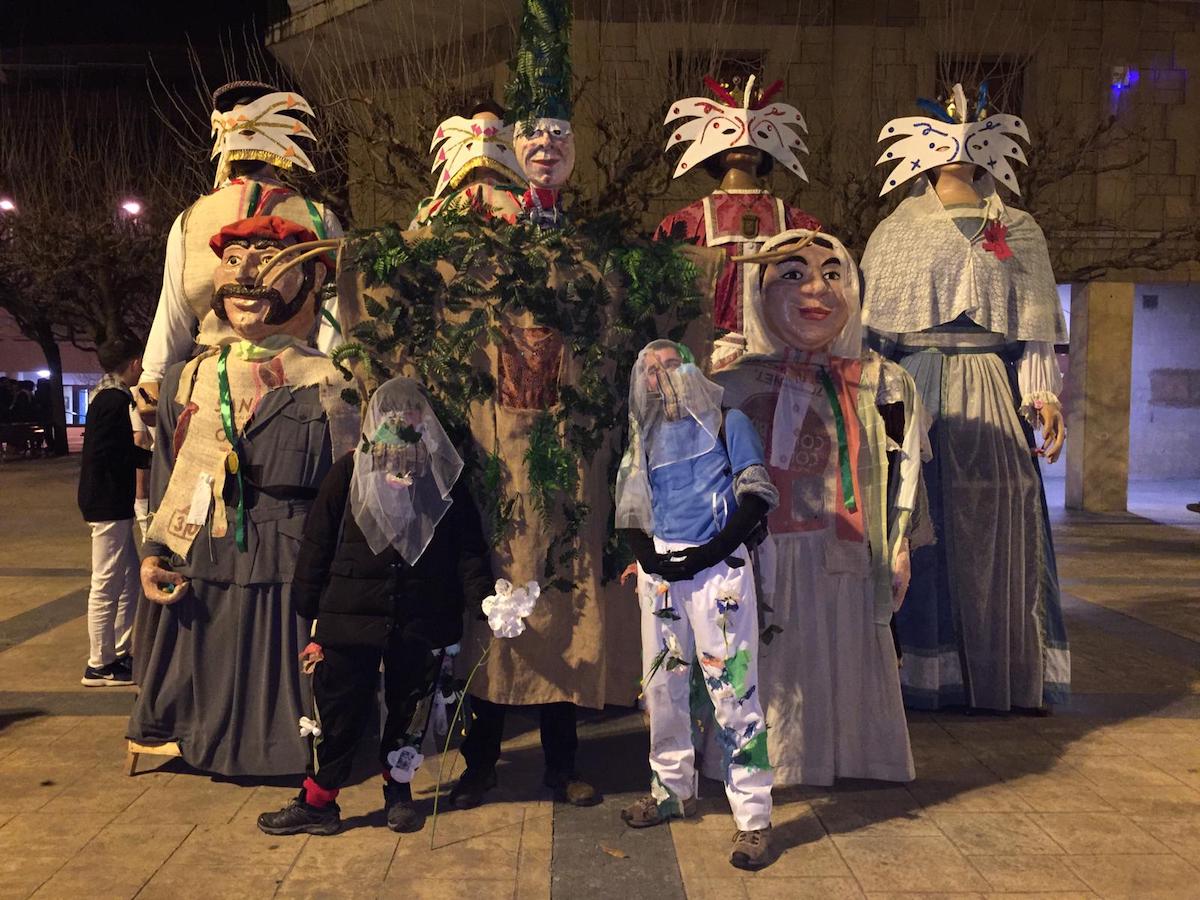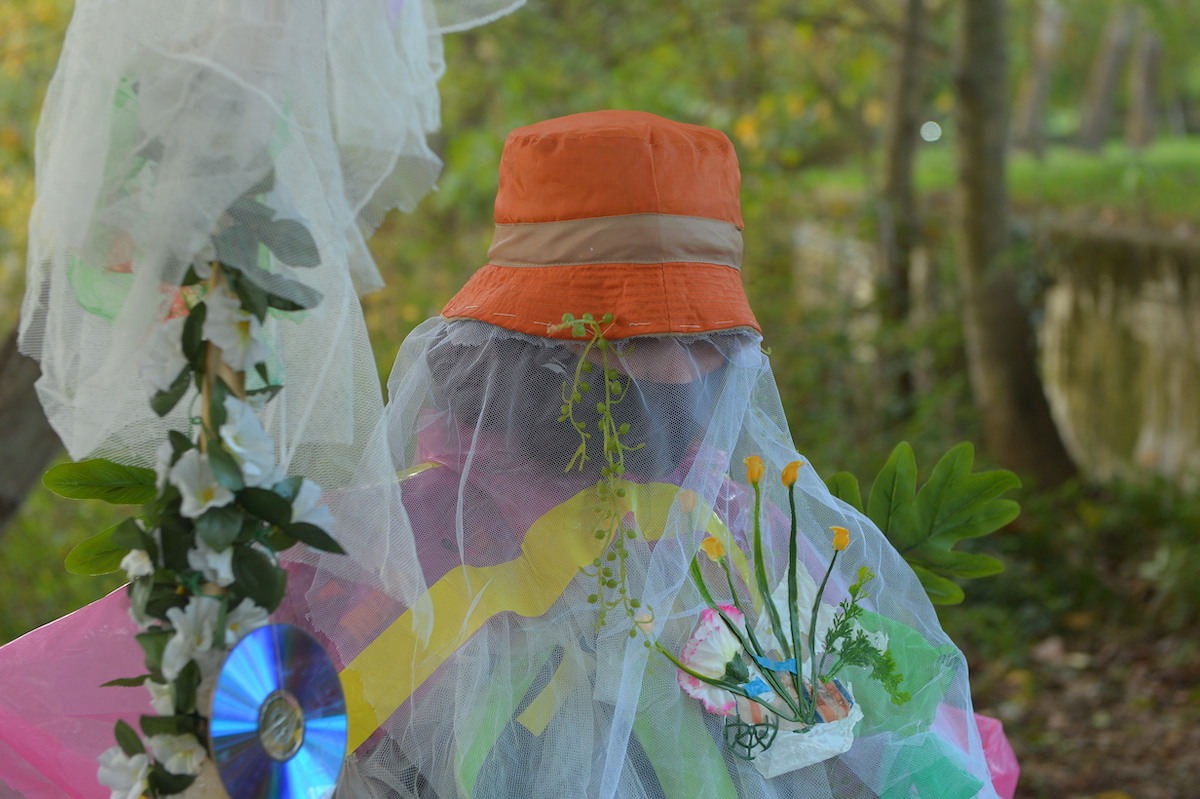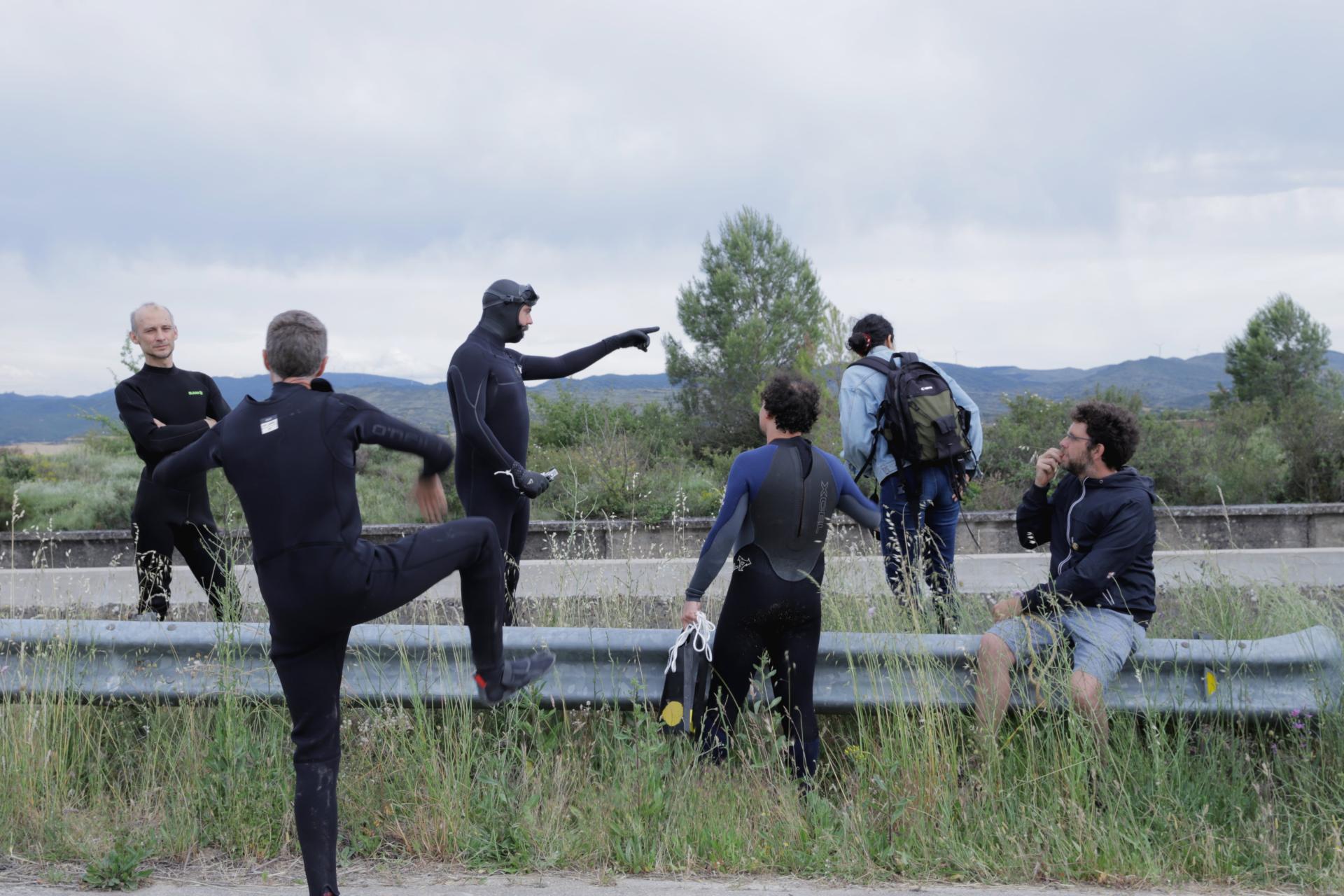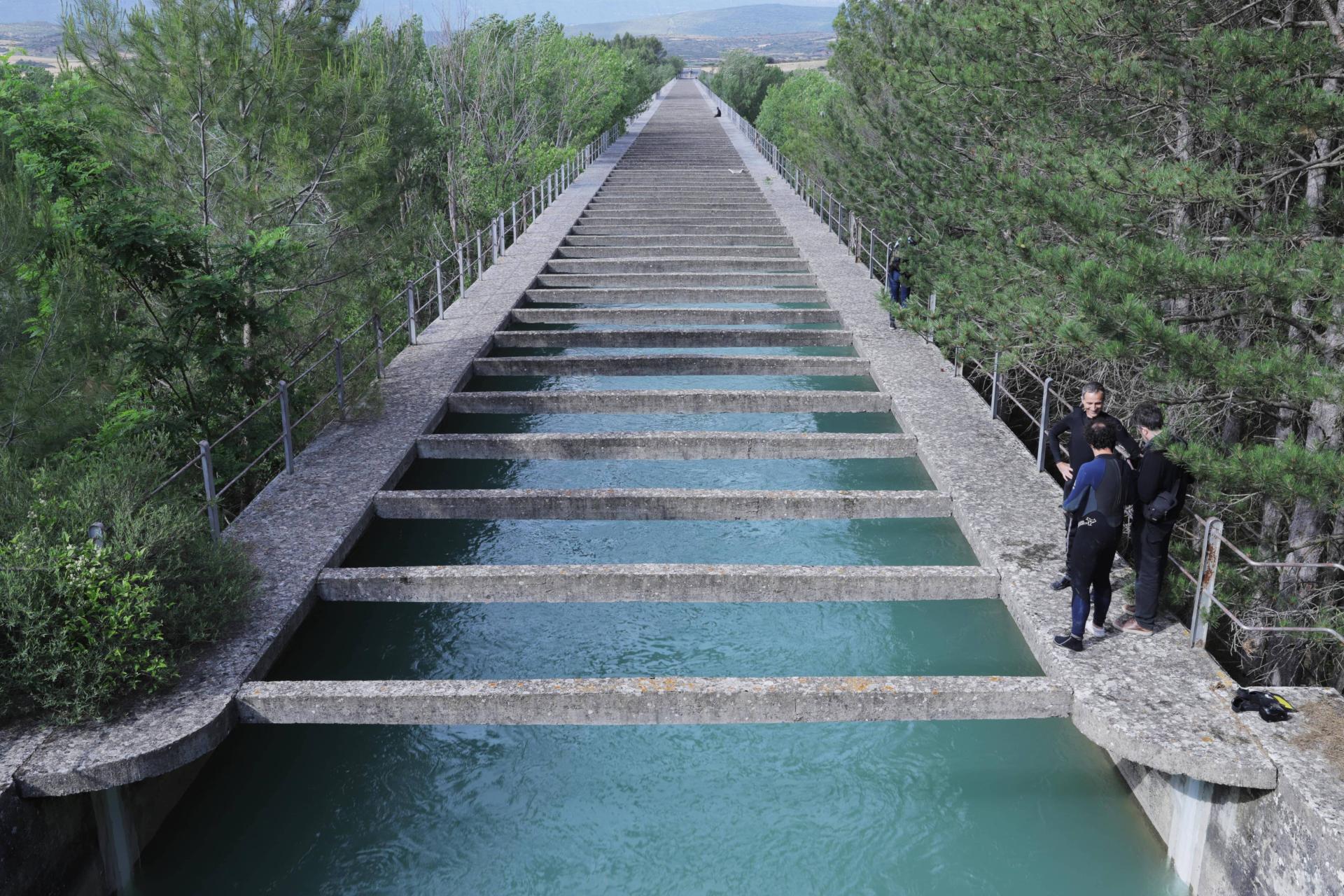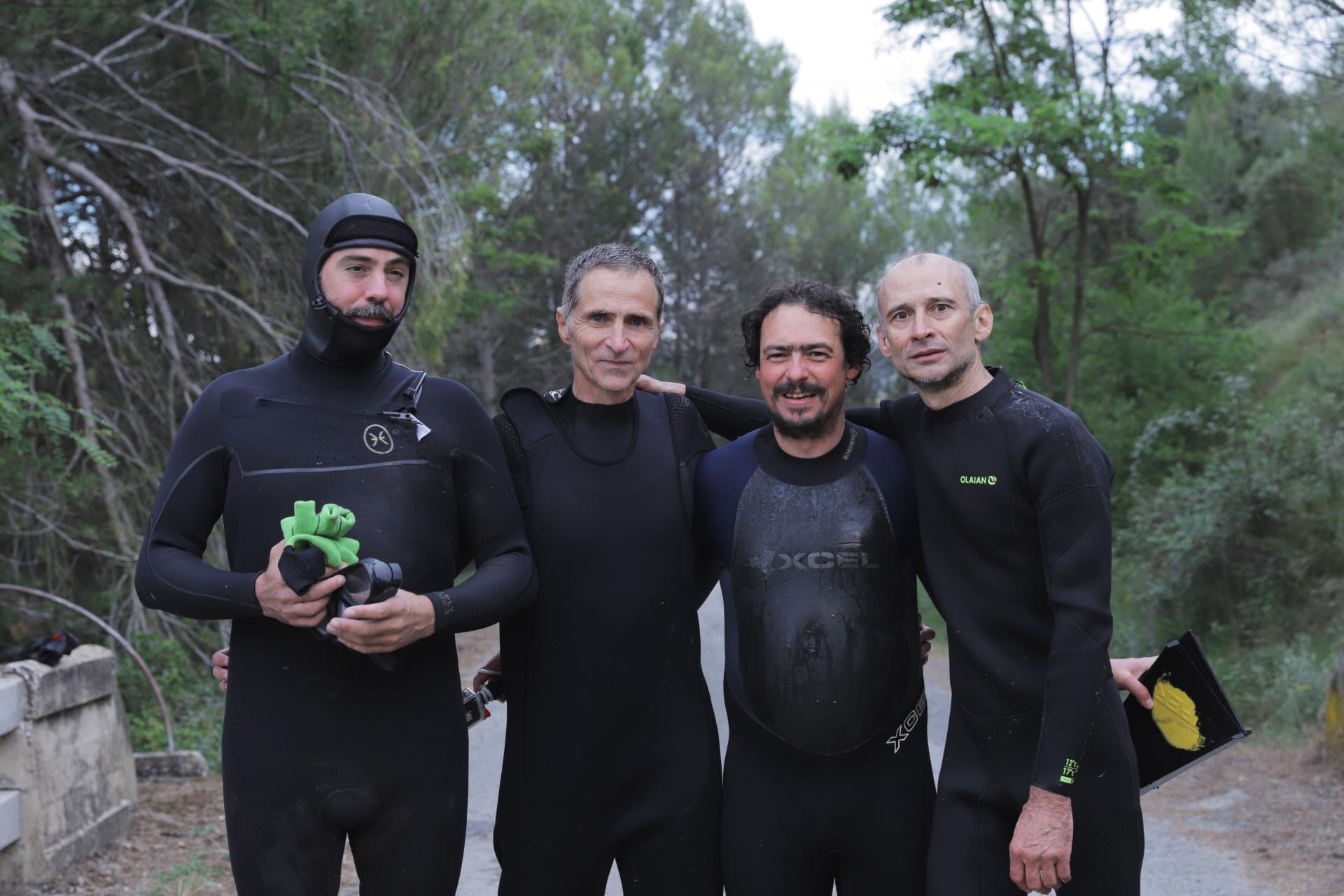Transversal Aesthetics
Basic information
Project Title
Full project title
Category
Project Description
Transversal Aesthetics is a platform for experimentation with art, education and social space. A place of confluence between artistic practices as a space for critical research; educational activities as a space for the production of content, interaction and transfer of learning; and the urban context as a space of relationship between specific themes of work and a specific active social space surrounding it.
Project Region
EU Programme or fund
Description of the project
Summary
Transversal Aesthetics is a platform for experimentation with art, education and social space. A place of confluence between artistic practices as a space for critical research; educational activities as a space for the production of content, interaction and transfer of learning; and the urban context as a space of relationship between specific themes of work and a specific active social space surrounding it. A platform in medium-sized urban spaces, as generators of social, cultural and environmental spaces at the boundaries between rural and urban. The project is based upon the cross-disciplinary dimension of art in order to bring experiences together with activities, which impact upon singular elements based on common themes and strategies shared among various participating agents and bodies.
The adjoining towns of Huarte, Burlada and Villava (Navarra), with a combined population of approximately 35,000 inhabitants, maintain an historical connection in fields such as education, sports or popular culture. The proposed theme is the relationship between the cultural and environmental ecosystem, based upon a re-evaluation of the peripheral position. The peripheral is understood as a space of divergent thought, an opportunity to try out proposals far beyond the received norm, at a distance from self-proclaimed centrality, and also from antagonism towards its pejorative connotation.
The work carried out follows three common strands: a temporary Artistic Residence, with the participation of an artist or a collective in order to create and research the context; setting up a local node involving various regional agents and associations; and an Educational Activities Device, to share knowledge and learning tools.These three strands may cross over, they may work in unison, or they may coexist in parallel, and submitted proposals must include observations regarding a project’s deployment across these strands, and the interaction among them.
Key objectives for sustainability
The town of Huarte, where the Huarte Centre is located, stands next to the towns of Burlada and Villava on the outskirts of Pamplona. The three localities follow the course of the river Arga, which has generated historical and cultural links among them. In recent years, the boundaries between rural and urban areas in these towns have been modified, due to urban and population growth, the conversion of gardens/allotments into leisure spaces, and changes in leisure habits, among other reasons. The focus of interest of the project to be developed is the study of this area's cultural / environmental ecosystem. The territorial node will be activated through local social groups linked to feminism and environmentalism, thinking about how to make the different community's relationship with the river sustainable and co-responsible, going through sports, leisure activities such as festivities and other cultural events.
Key objectives for aesthetics and quality
Following the course of the river itself as a flow which traces outs and blurs the landscape, as a natural element that shapes and at the same time blurs the boundaries between the rural and the urban. Similarly, the boundary between the collective imagination, visualised as an imprecise flow, is presented here as a recurrent element and a way of working by using both artistic and educational practices, applied to the local context. Each Transversal Aesthetics program focuses on the possibilities offered by the collective imagination of the river to approach it from different points of view in art: frontiers between fiction and reality, popular games, mythology, heritage, tradition, urbanism...
The dynamics and workshops to be carried out are sometimes geared towards highlighting the collaborative meeting and task distribution practices of "Auzolan"; the work which is disinterestedly realised in favour of the community, and which becomes a natural meeting place among peers, as well as transmitting and working based upon the experiences, stories and materials collected and / or contributed in the first phase of the residency. Thus, a dialogue among these elements is established as drivers which allow us to emerge from the danger of self-referentiality, producing common elements, as well as stimulating collaborative processes and the imagination based on the development of different aesthetic practices, together with students from the schools, and members of the participating workshops.
Some other activities carried out are developed by creating a dialogue between collaborative practices, mythological and naturalist stories of the local Basque culture around water, and the maintenance of the material bases that support life.
Key objectives for inclusion
The work carried out will follow three common strands in order to achieve an inclusive participation during its development: a temporary Artistic Residence, with the participation of an artist or a collective in order to create and research the context; setting up a local node involving various regional agents and associations; and an Educational Activities Device, to share knowledge and learning tools.These three strands may cross over, they may work in unison, or they may coexist in parallel, and submitted proposals must include observations regarding a project’s deployment across these strands, and the interaction among them.
The dynamics and workshops to be carried out are sometimes geared towards highlighting the collaborative meeting and task distribution practices of "Auzolan" (neighborhood labor in Basque) ; the work which is disinterestedly realised in favour of the community, and which becomes a natural meeting place among peers, as well as transmitting and working based upon the experiences, stories and materials collected and / or contributed in the first phase of the residency.
The project is configured through the parallel work between the creative process and the configuration of a motor group or territorial node, where a series of activities are established to dialogue and share materials and results of the project in residence, as well as to generate a framework of collaborative production and creation. This way inclusion is achieved through collaborative work to collectively imagine and build a sustainable and inclusive society in direct relation to its environment.
Results in relation to category
Transversal Aesthetics is seen as a “hotbed” of projects linked to medium-sized cities, and at the same time to cultural facilities related to them. This way the project achieves a systemic and lasting impact in this aspect within the local cultural and social context, as well as responding to the objectives set out by the New EU Bauhaus Program, a key collaborator to achieve the continuation of this project, diversifying the sources of financing of the program as well as contributing to the establishment of synergies between the private and public sectors.
In this sense, the impact on the territory is one of the features that make up the identity of this program, which explains its relevance within the community where it is registered as well as the interest for the audiences it is addressed to. This question also coincides with the intention of the recently approved Foral Law of Cultural Rights in Navarra, a pioneer in the country for recognizing the right to culture as a fundamental right within the territory where we are, and therefore assuming a change in time to promote cultural policies that defend the value of culture as a common good, as well as projects that allow participation in cultural life as a pillar of the construction of a more equal and democratic society.
How Citizens benefit
The local nodes may comprise a number of agents, organisations or individuals interested in participating, or which are associated with social, artistic or research contexts on the theme. Prior to the development of the artistic project and/or educational action, the nodes may vary, or may increase in their development. The artist or collective must propose a project involving the node, and must add their own agents to the network, which may be more or less involved, depending upon their role within the project’s framework. The project is carried out in a triangular fashion, proposing workshops or interventions in public space, open presentations and production of results.
In a second phase, a publication is produced jointly by the participating organizations, artists and other agents to the network. This publication may take different forms such as a book or film, it is presented to the community and is generated with their collaboration collecting a series of projects and artistic processes that have affected their social space. This publication may be accompanied by texts by authors who theorize about mediation, the management of artistic processes that involve different forms of participation, or collaborative creation. The proposals belong to this hybrid space where art, education and cultural management deploy process activation strategies, and are carried out in contexts where the natural, the rural and the urban space converge, sometimes inherently, others artificially.
Innovative character
The focus of interest of the project to be developed is the study of this area's cultural/environmental ecosystem. The selected project in residency must investigate and explore the textural and dimensional aspects related to the working context, in order to activate working processes which approach themes connected to realities, fictions, utopias, dystopias or eco-socio-cultural heterotopias; from imagining other possible ecosystems, to analysing the existing ecosystem in order to address certain realities, or to construct fictions that generate other possible realities. The activation of the territorial node, that is, the grouping of locally involved participants, and the mediation activities, will be accomplished by local collectives, and individuals interested in involving themselves in this particular field of work. The selected project works within this context, and on the predefined theme.
The project’s theme is riverbeds in the contemporary urban contexts, developed through artistic actions and collaborations in educational and social settings, with the objective of putting ideas into practice, ideas based upon our relationship with rivers, understood as structures of memory, ecology and urban transformation.

